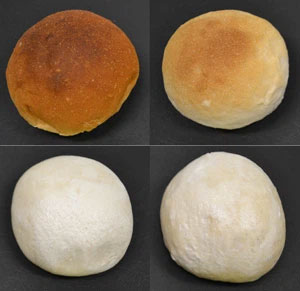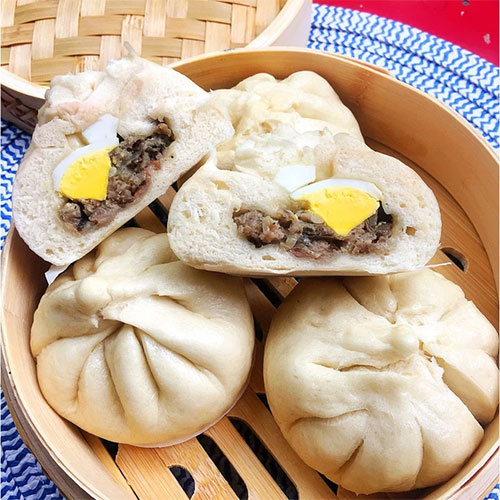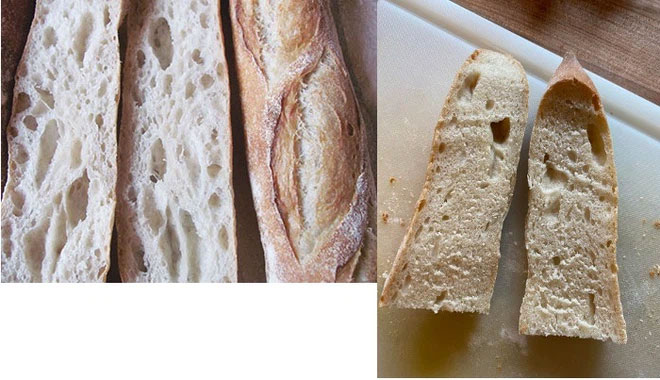Toasted bread is perhaps the most familiar type of bread for Vietnamese people, but it may not necessarily be the healthiest option. According to a study conducted by Singaporean scientists, steamed buns and bao-style steamed bread have a lower glycemic index than toasted bread and baked bao.
The method of preparing bread is one of the key factors that determine the glycemic index of this starchy food. This study examines the changes in glycemic response when consuming steamed bread instead of the traditional Western method of baking bread.
The glycemic index (GI) of a food indicates the rate at which that food increases blood glucose levels after entering the body. Foods with a high GI will cause a faster increase in blood sugar than those with a low GI. In this study, scientists made bread using two methods—baking and steaming—to observe the differences in macronutrient composition, processing conditions, and the variation in glycemic index when altering the recipe and preparation method.

Toasted bread that we often eat.
To conduct the experiment, the scientists prepared four types of bread: toasted bread, bao, improved toasted bread, and improved steamed bread.
The improved steamed bread is made using a Western-style toasted bread recipe, then steamed in an Eastern style; in this article, it will be referred to as “steamed bread.” The improved toasted bread is made using an Eastern bao recipe, then baked in a Western style, and will be referred to as “baked bao.”
Comparing the four types of bread, we have the following order from lowest to highest in terms of starch digestibility in the lab and glycemic response in the body: baked bao, followed by toasted bread, bao, and then steamed bread.
Thus, steamed bread has the lowest glycemic response. Specifically, the time for the highest glycemic response for steamed bread is 30 minutes, while for conventional Western toasted bread, it is 45 minutes.

Photo of the four types of bread tested by scientists: toasted bread (top left), baked bao (top right), bao (bottom left), steamed bread (bottom right) (Image: Elsevier).
“For the first time, a study has shown that even when using recipes with similar ingredients, applying different processing conditions, such as kneading time, kneading intensity, fermentation time, and cooking methods, will lead to slower starch digestibility in the lab and reduced glycemic response in practice,” is the exact remark about the characteristics of steamed bread compared to toasted bread in the study.
In the study, the scientists steamed the bread at 100°C for 10 minutes instead of baking at 210°C for 11 minutes. Both the intensity and time of kneading were reduced, and the fermentation time was nearly halved, from 70 minutes to 40 minutes.
“Adjusting the physical structure and starch digestibility occurred due to differences in the processing method. A more compact bread structure may hinder the accessibility of amylase to starch granules, resulting in a slower release of glucose and a reduced glycemic response of Eastern-style baked bao and improved steamed bread,” the researchers explained.
However, the overall average GI among the types of bread remained unchanged.
Nevertheless, the researchers believe that changes in glycemic response through alterations in processing methods could provide manufacturers with a “new approach to modifying the glycemic index of starchy foods.”
Traditionally, ingredients like beta-glucan (a type of inter-molecular sugar compound), galactomannan (a thickening agent), non-starch polysaccharides, and oligosaccharides have been used to lower the glycemic index of high GI foods, but this study shows that changing the glycemic response without altering the input ingredients is feasible.
Additionally, steamed bread has one drawback: its volume has significantly decreased, even though it is made from high-protein flour typically used for toasted bread.

Bao
The flour used for bao has a low protein content (7-9%) or medium (10-12%) and is typically used for making soft, smooth, fluffy breads, while the flour for making bread needs to have a high protein content (12-14%) to ensure the bread has a chewy and sturdy texture.
The researchers noted that this could be due to the shorter kneading time and lower kneading intensity, which means the gluten network does not develop sufficiently. “The low energy input during the dough development process combined with the shortened fermentation time results in improved steamed bread having the least airy structure compared to the other three types of bread.”
The gluten network is a network formed after kneading flour with water and allowing it to rest for a while. Gluten is made up of gliadin and glutenin, the two main proteins in wheat flour, which account for 80% of the flour. Gluten is both elastic and stretchy, helping to retain air during fermentation, allowing the bread dough to rise well when cooked. The air trapped by gluten contributes to the bread’s airy structure, with many holes after baking.
Under-proofed bread or improperly kneaded dough will rise poorly, resulting in a dense crumb rather than an airy one, as seen in the case of the steamed bread discussed here. Below are illustrations of two cases of well-risen and poorly risen bread. Well-risen bread will have many air pockets of varying sizes, while poorly risen bread will have fewer air pockets and a denser crumb.

Illustration of well-risen, airy bread with many holes (left) and poorly risen bread with a denser crumb and fewer holes (right). (Image: reddit, Bakers Journal)
This research paper is titled “Can bread processing conditions alter glycemic response?”, and was published in Food Chemistry in 2015. The team conducting the study consists of scientists from the Singapore Institute of Clinical Sciences (SICS) under the Agency for Science, Technology and Research Singapore (A*Star).



















































